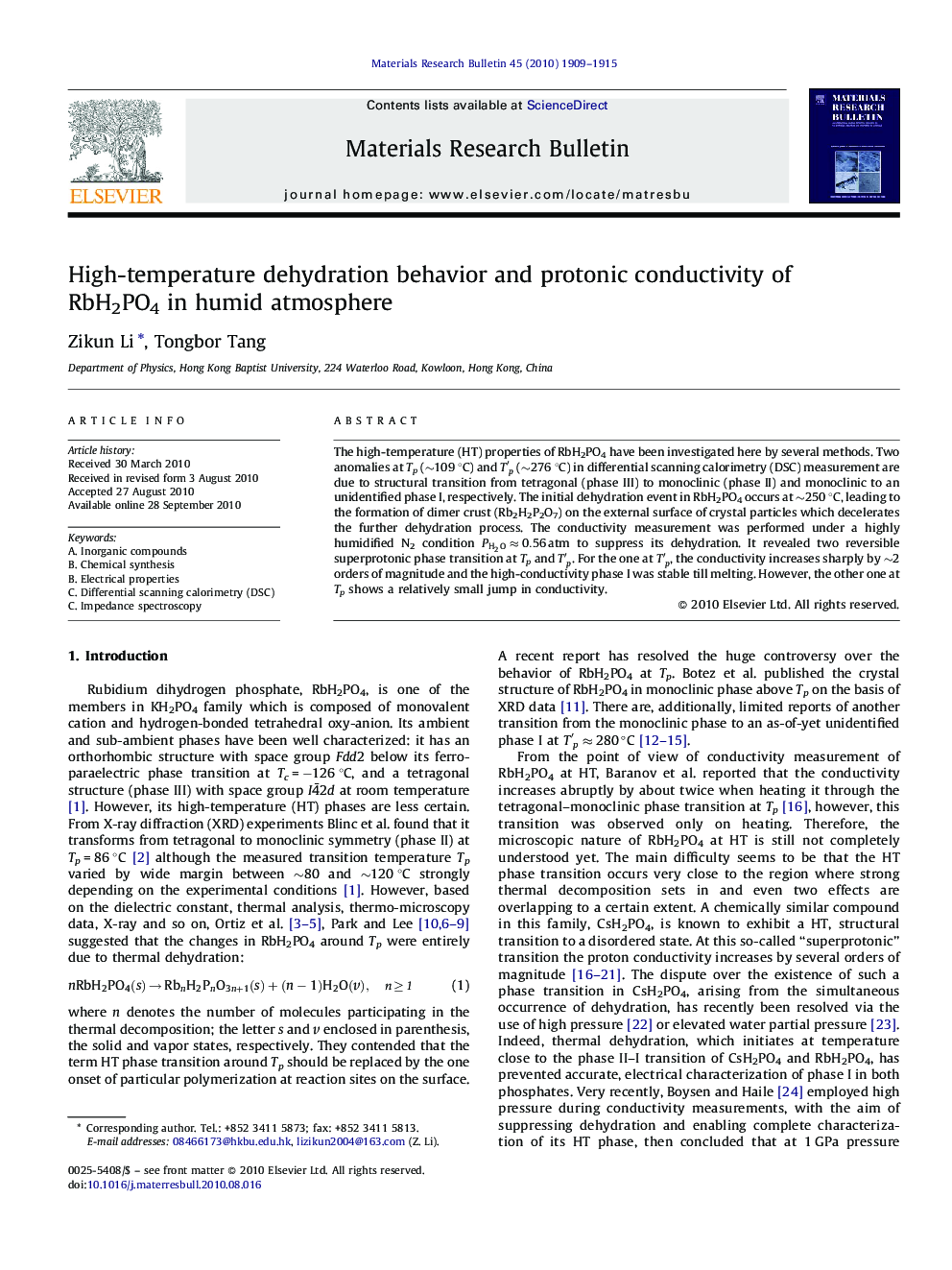| Article ID | Journal | Published Year | Pages | File Type |
|---|---|---|---|---|
| 1490686 | Materials Research Bulletin | 2010 | 7 Pages |
Abstract
The high-temperature (HT) properties of RbH2PO4 have been investigated here by several methods. Two anomalies at Tp (â¼109 °C) and Tâ²p (â¼276 °C) in differential scanning calorimetry (DSC) measurement are due to structural transition from tetragonal (phase III) to monoclinic (phase II) and monoclinic to an unidentified phase I, respectively. The initial dehydration event in RbH2PO4 occurs at â¼250 °C, leading to the formation of dimer crust (Rb2H2P2O7) on the external surface of crystal particles which decelerates the further dehydration process. The conductivity measurement was performed under a highly humidified N2 condition PH2Oâ0.56atm to suppress its dehydration. It revealed two reversible superprotonic phase transition at Tp and Tâ²p. For the one at Tâ²p, the conductivity increases sharply by â¼2 orders of magnitude and the high-conductivity phase I was stable till melting. However, the other one at Tp shows a relatively small jump in conductivity.
Keywords
Related Topics
Physical Sciences and Engineering
Materials Science
Ceramics and Composites
Authors
Zikun Li, Tongbor Tang,
